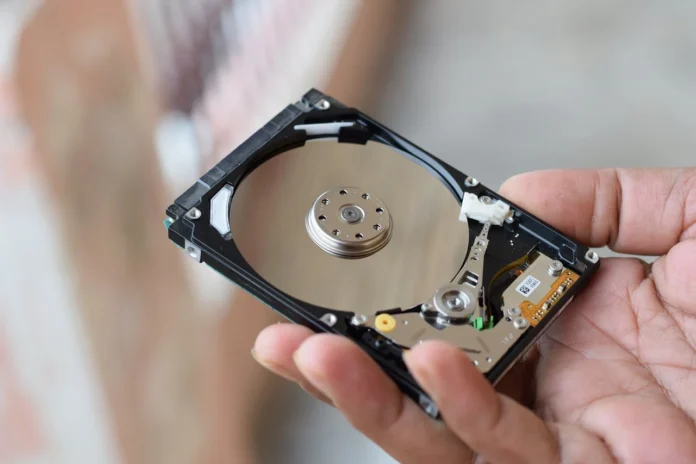Let’s Dive Deep into Storage Devices in Computers!
Hey there! 👋 Let’s chat about something super important but often overlooked—storage devices in computers. These are the unsung heroes that keep all your files, apps, and precious memories safe. Whether you’re a tech wizard or just someone curious about what keeps your laptop ticking, I’ve got you covered. Let’s explore the fascinating world of computer storage together! 🤓
What Is Storage in a Computer?
Okay, picture this: Your computer is like a bustling city. 🏙️ Storage is the infrastructure—buildings, roads, and warehouses—where everything lives. From your operating system to that hilarious meme you saved last night, storage devices make it all possible.
Now, storage in a computer comes in two major types:
-
Primary Storage:
This is like your computer’s short-term memory. It includes RAM (Random Access Memory), which works fast but forgets everything when you turn off the computer. -
Secondary Storage:
This is the long-term memory—where all your files are stored even when the computer is off. Think hard drives, SSDs, and external USB devices.
The Big Players: Types of Storage Devices
Let’s break down the main types of storage devices. Each has its own strengths and quirks, so there’s something for everyone.
1. Hard Disk Drives (HDDs)
HDDs are like the reliable workhorses of storage. They’ve been around forever and are great if you need lots of space on a budget. These drives use spinning disks to store data, which is why they sometimes feel a bit slow compared to modern options. But hey, they’re affordable and can hold terabytes of data! 💾
2. Solid-State Drives (SSDs)
Now, SSDs are the speed demons of the storage world. 🚀 Unlike HDDs, they don’t have any moving parts, which makes them super fast and reliable. Your computer boots up in seconds with an SSD. They’re perfect for gaming PCs, as speed is everything. Sure, they’re a bit pricier, but totally worth it for the performance boost.
3. USB Storage Devices
Ah, the humble USB stick. It’s portable, easy to use, and yes, USB storage devices can be reused. Just format them, and you’re good to go. They’re perfect for quick file transfers or backups when you’re on the move.
4. Network-Attached Storage (NAS)
Ever dreamed of having a mini-server at home? That’s what NAS is for! It’s ideal for large storage devices on routers, letting you share files across multiple devices. It’s like having your own cloud storage at home.
5. Cloud Storage ☁️
Speaking of the cloud, this is a game-changer. Services like Google Drive, Dropbox, and OneDrive let you store files online. It’s perfect for backups or accessing files anywhere. But watch out for the dreaded notice: storage devices with expired subscriptions—renew to keep your data safe.
How to Handle Everyday Storage Questions
Here’s where things get practical. Storage devices are amazing, but they’re not without their quirks. Let’s tackle some common scenarios:
Q1: What if my storage device won’t unmount?
This happens when a file or app is still using the device. Close everything and try again. Still stuck? A quick restart usually does the trick.
Q2: How do I write disk images to a storage device on Windows?
It’s easier than it sounds! Use tools like Rufus or BalenaEtcher. Load your disk image, select the storage device, and let the software handle the rest.
Q3: Can USB storage devices be reused?
Absolutely! Just format the drive, and it’s as good as new. This makes them great for backups or transferring large files.
Q4: What about large storage devices on routers?
NAS setups or external drives connected to routers are a fantastic way to share files across devices at home or work.
Q5: What’s with the “expired subscriptions” notice?
Cloud storage services like Google Drive sometimes send a notice about storage devices with expired subscriptions if your plan lapses. Renew your subscription to regain full access.
How to Choose the Right Storage for You
Here’s a quick guide to picking the best storage device:
-
Do you need speed?
Go for SSDs. They’re perfect for fast boot times and smooth gaming experiences. -
Do you need space?
HDDs are the budget-friendly choice for storing large amounts of data. -
Need portability?
USB drives and external SSDs are your best friends. -
Sharing files at home?
Consider a NAS setup or large storage devices on routers for easy file access across devices.
Fun Tech Tidbits
Let’s sprinkle in some cool facts:
-
What’s U-Boot list storage devices?
This is a feature for tech-savvy users to see all connected storage devices during the boot process. Super handy if you’re setting up Linux systems! -
Device rendering storage
This term pops up in tech discussions about how systems handle storage tasks efficiently.
Why Storage Matters
Storage devices aren’t just a tech thing—they’re part of our daily lives. From storing work files to holding cherished memories, they’re essential. Whether you’re dealing with issues like a storage device won’t unmount or exploring the latest in cloud storage, understanding these devices empowers you to make smarter choices.
So, what’s your favorite type of storage? Are you team SSD or HDD? Or maybe you’re all about the cloud? Let’s chat about it! 😊

